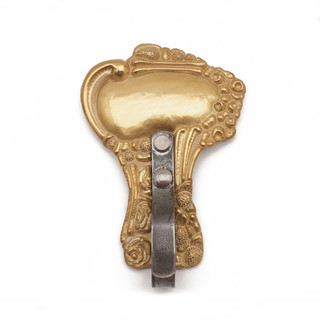REVIEW Transformation – Six Swedish Artists
- by Claudia
- 30 mag 2017
- Tempo di lettura: 3 min
Until October 1st Palazzo Mocenigo in Venice, home of the Museum of Costume and Perfume, hosts the exhibition Transformation – Six Swedish Artists dedicated to contemporary art jewelry.

The curator Inger Wästberg – an art history, author of Contemporary Swedish Art Jewellery (2013) and one of Sweden’s leading experts in art jewellery - has selected pieces of Tobias Alm, Sara Borgegård Ålgå, Hanna Hedman, Catarina Hällzon, Agnes Larsson, Märta Mattsson.
The exhibited artists are part of permanent collection at the National Museum of Swedish in Stockholm. The museum monitors what takes place on the Swedish jewelry scene and reflects this in both exhibitions and acquisitions by the museum.
The exhibition reports on current trends in contemporary Swedish jewelry and contributes to the ongoing discussion around its categorization as fine art over craft.
Topics such as environmental, gender, class and ethnicity are just as important to art jewelry as they are to the discussion on art in general.
Catarina Hällzon’s work acts as a comment on consumer society using fish scales to illustrate how everything should be conserved and recycled. The nature has an important role in her work because she considers it like storage of materials from which she can glean. In this way she creates necklaces and brooches from fish leather that she has fished previously herself. She works that kind of leather with old techniques that she has recovered.
Tobias Alm leads to a question of typical gender representation and structures in society creating a series of tool belts as jewelry. Pieces presented in this exhibition are hybrids between the tool belt of today and a historical piece of jewelry called the Châtelaine.
Artworks of Sara Borgegård Ålgå are based on the study of the relationship between jewelry as constructed and applied object and the contrast with the natural body. The artist works on the big dimensions of the objects because she aspires to change the traditional relationship between body and jewels. Soft textile lines often sustain heavy, hard forms of iron and wood covered with paint as a protective and at the same time fragile skin.
The dialogue between past, present and parallel worlds distinguished the artistic research of Hanna Hedman. Her objects walk a fine line between imagination and reality, art and function. They look more pieces of armor than accessories and they offer to the wearer an entrance into an alternative universe.
Agnes Larsson is fascinated by the material that completely takes over her working process. Her hands are the researching tool of this material and they give expression to objects. She uses different kind of materials, from aluminum to carbon, from horse hair to wire.
For Märta Mattsson, jewel is a social communicator being fascinated by things, which others do not want to see. She likes to feel disgusted at something without turning your eyes from it. In her jewels she aims to represent topics like death or fears presenting them in a more light-hearted and attractive way. Her pieces can act as communication starters into people inner worlds.
More than half of the six artists included in the exhibition have consciously chosen to work with simple, inexpensive materials such as Agnes Larsson’s horse hair necklaces, Catarina Hällzon’s imaginative use of fish skin and the cotton rope used in Sara Borgegård Ålgå’s necklaces, emphasizing how artistic meaning can add more value to a piece than precious stones.
The use of non-precious materials, redefines the values traditionally associated with the goldsmith’s art.
















